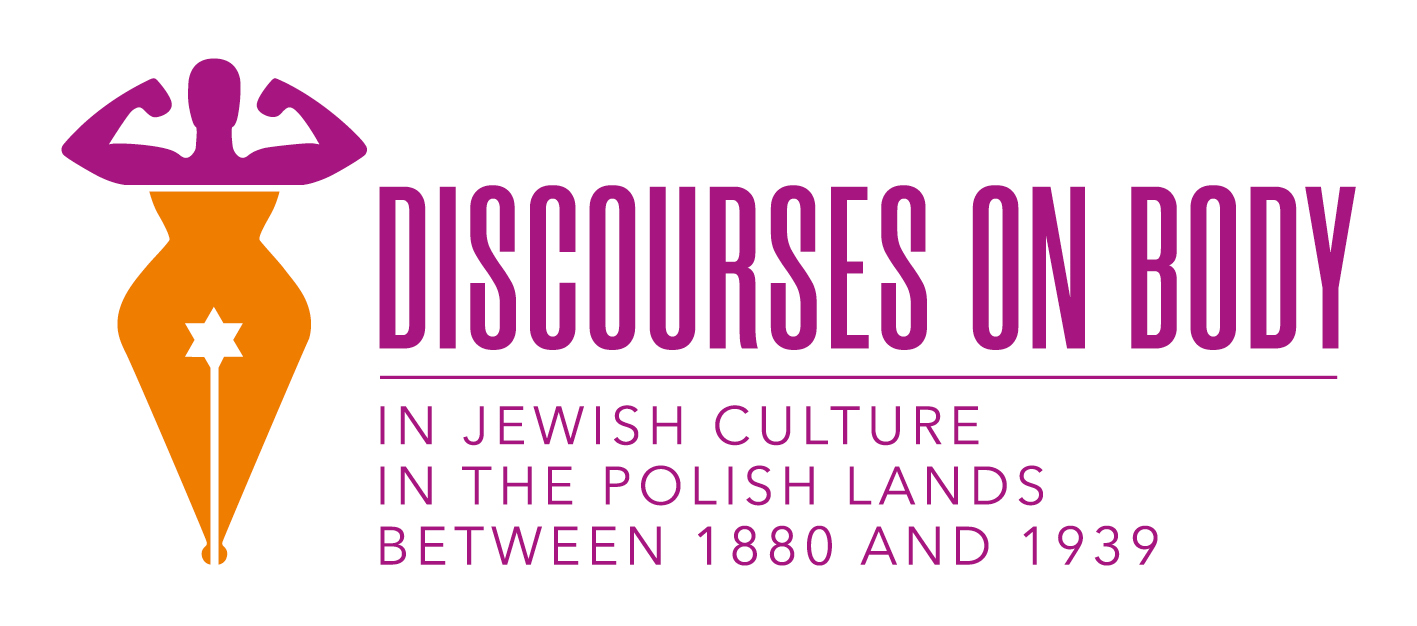BASIC INNFORMATION ABOUT THE PROJECT
Project financed by the National Science Center under the OPUS competition grant no. 2022/47/B/HS2/01522.
Since the beginning body was in the Jewish culture an object of heated discussions, quarrels and rabbinic treaties. Unlike Christianity, though, despite controlling especially woman’s body through various rituals, body was never taboo. As one of the scholars stated people of the book were in fact people of the body. Since the 1880s with advancing industrialisation, migration, modernisation, secularisation, emergence of new political movements within Jewish culture and beyond it, until the outbreak of WWII, discourses on body in Jewish culture were undergoing considerable changes.
Project’s Goal
The aim of the project is to examine the nature of the changes in discourses on body in the Polish lands, that are defined as the former territories of Polish-Lithuanian Commonwealth and Second Republic of Poland, and which can be found in the following sources:
- Press
- Literature
- Recollections and memoirs
- Diaries
- Correspondence
- Autobiographies
- Political pamphlets
- Photography
- Film
- Press illustration
- Journals’ covers
- Painting
- Sculpture
- Drawing
Text materials are in 5 languages: Yiddish, Hebrew, Polish, Russian, and German, which were used by Jews living in the Polish lands in the analysed period. Visual materials were not just an ornament to the written content, but they co-shaped discourses on body. In autobiographical sources photography or newly-developing film are often mentioned as the factors influencing one’s perception of one’s body. Thus, visual sources are treated in the project as the ‘sixth’ language.
It is crucial that each of the above-mentioned languages had a different function: Yiddish, often called women’s language, gives intimate, women’s perspective; Hebrew, on the other hand, is the language of male treaties on woman’ body, hence it gives male perspective; and with the emergence of Zionism it propagated new model of Jewish body (both male and female) – muscular, healthy and sportive; while Polish, German and Russian were aimed also at non-Jewish reader, thus they have much more autoenthographic character. Additionally, on the turn of the twentieth century, Polish gave voice to acculturating Jewish women.
Time Frame
Project timeframe that goes beyond typical chronology, is aimed at thorough examination of the impact of WWI, which shook social norms, which was visible in fashion, in withdrawal from mikveh of religious women, and in appearance of mutilated, disfigured bodies that reminded of fragility of human body; on discourses on body.
The project’s objective is to analyse and juxtapose the changes that occurred within the discourses on body until the outbreak of WWII, which brought a totally new paradigm in reflection of Jewish body and changed entirely social structure of the Polish lands.
The following are some of the research questions that a team composed of philologists, historians and art historians will try to answer:
What were mechanisms shaping those discourses?
What were the relations between them?
How were the new models of Jewish corporality related to different variants of Jewish identity?
How did the new ideas related to corporality spread?
The project, which develops further studies on discourses on body in Polish-Jewish writings, is highly original in its character as it approaches the topic, that was not thoroughly studied, from a very broad perspective.
Research methods
Due to its transdisciplinary character, the project is intended to use different research methods like: discourse analysis, gender theory and criticism, archival analysis, literary analysis, source criticism.
Results
Results of research on discourses on body in five languages, in four different areas of human creativity (literature, autobiography, press and visual arts), in two different perspectives (male and female) will considerably broaden current knowledge not only on Jewish history and culture in the Polish lands, but also on Polish social history and culture between 1880 and 1939. Obviously, studies on corporality are related to reproduction rights, sexuality, social norms, hygiene, healthy life style and development of sport, thus the results of the project may be used by scholars from different disciplines in humanities, like: historians, sociologists, social psychologists, theologians, cultural studies specialists, art historians, literary specialists, and German, Russian, Polish, Yiddish and Hebrew philologists.
The results will be gathered in the following forms:
- An anthology of sources translated into Polish
- A monograph
- Articles in peer-reviewed academic journals
- Papers presented at conferences, workshops and seminars
- Non-academic articles and events
- A virtual map showing the spread of ideas on corporality (data base for the map will be made of Jewish press in five languages (Yiddish, Hebrew, Polish, German and Russian) that was published in the Polish lands between 1880 and 1939.
- Justyna Lisak's PhD dissertation: An Image of Body and Corporeality in Jewish Press and Literature Published in German and Austrian Partitions between 1880 and 1918.
- Anna Grygoś's MA thesis: A Changing Beauty Canon of a Jewish Woman on the example of the "Ewa" Weekly
- Anna Urbanowicz's MA thesis: Hygiene and Health on the Pages of "Russkij Everei" between 1879-1884
